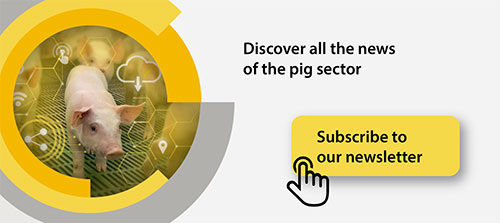Blog
Blog

WelFarmers selects 12 practices that improve pig welfare
06th November 2025 - News
The European WelFarmers project, funded by the European Union, has announced the 12 winning practices from its first evaluation round. These initiatives, originating from various farms and research centres across Europe, aim to improve animal welfare in pig production through applicable, sustainable and economically viable solutions.
Animal welfare as the cornerstone of the future of pig production
WelFarmers is based on four key action pillars: ban of cages, pigs with undocked tails, avoiding pain castration, and space allowance and flooring. Each practice has been evaluated according to three essential criteria: animal welfare, economic feasibility and environmental sustainability. From the 96 good practices gathered in the first round, the 12 most outstanding have been selected, considered examples of technical innovation and real applicability.
Winning practices of the WelFarmers project
Ban of cages
- “Easy access to piglets”: This practice promotes free movement for the sow and better contact with her piglets. By eliminating rigid barriers between mother and piglets, stress is reduced, lactation is improved, and piglet survival increases, as they can access the teat freely and safely.
- “Losse lactation & piglet comingling”: It promotes farrowing management without restrictive cages, in which the sows remain loose during lactation and the piglets can mix between litters. This early interaction favors socialization, reduces aggressive behavior and stimulates natural maternal behavior, contributing to the general well-being of the group.
- “MamaGuide”: Device installed on the floor of the farrowing pen that reduces the risk of piglets being crushed by limiting the turning movements of the sow. It allows freedom of movement and safe access to the teat to be maintained, improving piglet survival without affecting well-being or productivity.
Pigs with undocked tails
- “Happy Tail”: A comprehensive approach that eliminates the need for tail docking through management practices that combine solid flooring with straw bedding, increased space per animal, good ventilation, and varied environmental enrichment. It improves animal welfare, reduces aggression, and demonstrates that tail-free production is viable and profitable in commercial systems.
- “Risk assessment tool”: This analytical system is designed to identify factors that can cause tail biting in animals with undocked tails. It allows farmers to anticipate problems, adapt management practices, and improve environmental conditions before tail biting episodes occur, promoting proactive and preventative management.
- “More and changing rooting material”: This involves offering a greater quantity and variety of manipulable materials, such as straw, rope, blocks, or wood, and replacing them frequently or when signs of restlessness or biting are detected. This variation keeps the pigs interested, reduces stress, and encourages natural behaviors.
Avoiding pain castration
- “Enhancing the value of immunocastration (vaccine)”: It promotes the use of immunocastration as an ethical and efficient alternative to surgical castration, eliminating pain, stress, and the risk of infection. When applied in systems with straw bedding and more space, it improves animal welfare, production efficiency, and consumer acceptance of the product.
- “Rationalising the practice of immunocastration”: It standardizes protocols, schedules, and application conditions for immunocastration to ensure uniform, safe, and effective results. Its implementation simplifies process management on farms and promotes its widespread adoption as standard practice.
- “Local anaesthesia to reduce pain during castration”: It implements the combined use of local anesthesia and analgesics during the surgical castration of piglets, significantly reducing pain and stress. It includes staff training and standardized protocols, offering a transitional alternative toward castration-free systems with improved animal welfare.
Space allowance and flooring
- “Drained flooring”: It combines the advantages of solid and slatted flooring, offering a dry, slip-resistant surface with a reduced opening (~10%) compared to traditional flooring. This design improves manure drainage, environmental hygiene, and animal comfort, reducing the risk of injury and microbial load.
- “Good space allowance microclimate and environment”: It integrates essential factors such as space per animal, ventilation, temperature, and density. A well-designed environment allows pigs to express their natural behaviors, reduces competition for resources, and improves both welfare and productivity, while also decreasing the need for antibiotics.
- “New and old, both works”: Proposes the intelligent combination of traditional infrastructure and modern equipment. It demonstrates that both new and renovated farms can successfully implement best practices in space and soil management. Animal welfare depends as much on management and functional design as on the intelligent use of technology, adapting each facility to its production context to achieve equivalent results.
Impact on the European pig sector
The WelFarmers project is redefining the European pig production model by demonstrating that animal welfare, profitability and sustainability can progress together. With the participation of over 50% of the EU’s pig production, its results are representative of the continent’s diverse production systems.
These good practices provide a common reference framework enabling farms to adopt adaptable, scientifically validated strategies. Their implementation supports a homogeneous transition towards more ethical and efficient systems, aligned with current regulatory and social demands.
The impact of WelFarmers transcends national borders: it fosters technical cooperation, strengthens the sector’s competitiveness and consolidates a European image of pig production based on knowledge, innovation and respect for animals.
Source: 333.








